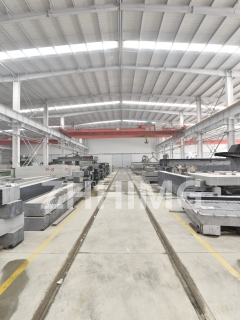As technology continues to evolve, the demand for top-quality semiconductor equipment has increased significantly. One of the critical components in the production of such equipment is granite, which is highly preferred due to its high strength, rigidity, and thermal stability. In the manufacture of precise machines used in semiconductor equipment, granite is considered for devices that require high accuracy, as the material can maintain its dimensions over prolonged use. The following article discusses how to assess the long-term performance of granite in semiconductor equipment.
Long-term Performance of Granite
Granite is widely used in semiconductor equipment because of its durability and stability. It is resistant to temperature changes, humidity, and chemical reactions. These features allow it to remain intact for many years, even under harsh operating conditions.
Temperature Stability
Granite offers exceptional temperature stability, which is essential when manufacturing semiconductor equipment. Fluctuations in temperature can significantly affect the accuracy of semiconductor equipment. As the temperature changes during operation, granite expands and contracts minimally, which helps maintain the device's precise alignment.
Vibration Dampening
Semiconductor equipment needs to operate without any vibration for it to work correctly. Granite offers a high level of vibration dampening, which ensures that the equipment operates smoothly. As a result, the equipment can maintain its alignment during operation, which is crucial in high-precision machinery.
Durability
Granite is one of the most durable materials used in the manufacture of semiconductor equipment. It doesn't corrode, rust, or decay, which adds to its longevity. It can stand up to heavy usage without wear and tear which means that semiconductor equipment made from granite will last long with little need for repair or replacement.
Design Flexibility
Granite comes in various shapes and sizes, which makes it easy to fabricate into different shapes and sizes. Therefore, it offers great design flexibility that allows the manufacturing of various semiconductor equipment. Moreover, it can be produced to suit specific requirements that match the needs of the semiconductor company.
Cost-Effective
Granite is cost-effective compared to other materials used in the manufacture of semiconductor equipment. Its durability reduces maintenance expenses, which lowers the overall cost of producing the equipment. Moreover, its long-life span reduces the need for frequent replacement of damaged machinery, making it a valuable resource for semiconductor equipment.
Maintenance of Granite
Proper maintenance of granite is essential to ensure it maintains its optimum performance over an extended period. It's critical to keep it clean and ensure that there is no build-up of contamination. This can be done by wiping it with a damp cloth and using a gentle soap to clean off any stubborn dirt.
Conclusion
The use of granite as a material in semiconductor equipment has become increasingly popular because of its durability, stability, and long-term performance. The combination of these features makes it a valuable tool in the manufacturing of high-precision machinery. Its high temperature stability, vibration dampening, design flexibility, and cost-effectiveness make it an excellent choice for semiconductor companies. Proper maintenance of granite is essential to ensure that it functions optimally throughout its lifetime. With its long-term performance capabilities, granite remains an essential material in the manufacturing of semiconductors, and its continued use is expected to increase significantly in the future.
Post time: Mar-19-2024

